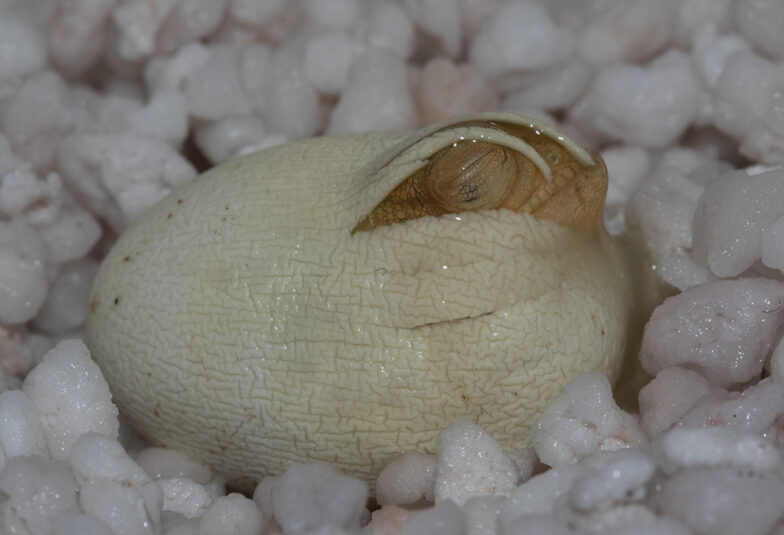The largest chameleon in the world – well, actually several species are fighting for the title. There are three contenders: the Meller’s chameleon (Trioceros melleri) from mainland Africa, the Parson’s Chameleon (Calumma parsonii parsonii) from Madagascar and the Madagascar giant chameleon (Furcifer oustaleti).
The Meller’s chameleon is found in the mountains of Tanzania, northern Mozambique and Malawi. The main distribution area is known to be Mount Zomba. The largest chameleon of this species measured to date is said to have measured 76 cm from the tip of its nose to the tip of its tail and weighed 600 g. The Parson’s chameleon, on the other hand, is found in various places on the central and southern east coast of Madagascar. Here, the largest chameleon measured so far is said to have been 72 cm long, but there are even measurements of over 700 g in weight. The Parson’s Chameleon is therefore definitely heavier, and the size of some animals comes close to that of the Meller’s chameleon. That leaves the Madagascar Giant Chameleon. It reaches almost 70 cm and, despite its sometimes impressive size, it almost always weighs less than 500 g. So despite its name, it will probably have to make do with third place.


#show your colours #internationalchameleonday #chameleonday #chameleondayMay9 #agchamaeleons
Pictures:
Trioceros melleri, Creative Commons Attribution 4.0 International, photographed by John Lyakurwa
Calumma parsonii parsonii, Creative Commons Attribution-Share Alike 4.0 International, photographed by von Jialiang Gao
Furcifer oustaleti, Creative Commons Attribution-Share Alike 4.0 International, photographed by Sharp Photography




